Life hacks for Cinderellas: how to separate rice from buckwheat quickly
Cereal stocks can mix for a variety of reasons. This problem is less common, but if it does, it takes a lot of time and effort to separate the mixed grains.
Is it possible to simplify and speed up this process? Yes, and there are several effective ways to do this. The article will tell you how you can quickly separate rice from buckwheat and which option is the most effective.
The content of the article
When it might come in handy
The main reasons for mixing cereals: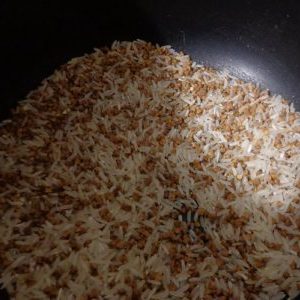
- accidental spilling of one cereal (buckwheat) into a container or bag with another cereal (rice);
- children playing in the kitchen without supervision;
- preparation of mixtures of different cereals for cooking;
- doing meditation exercises in some spiritual practices.
In most cases, mixing occurs randomly and requires re-sorting of the mixture - its separation.
How to separate rice from buckwheat: life hacks, methods and their assessment
The easiest way that the characters of the series "Interns" used was to throw out the mixture from cereals and buy new packages of rice and buckwheat. However, this option cannot be called economical, it is unethical to throw suitable products in the trash, and the problem can be solved with less radical measures.
Iterate over manually
Labor intensity: complicated.
Duration: long.
The most reliable option is to sort out the cereal mixture by hand.
How to speed up the process:
- choose an opaque monochromatic table surface or cover, the color of which will differ from the color of rice and from the color of buckwheat - then the grains of both cereals will be more noticeable even with slight fatigue;
- conditionally divide the table into 3 equal parts: pour the mixture into the middle, and sorted rice and buckwheat - on both sides of the center;
- pour the mixture in small portions and distribute it on the table in one layer using a large knife or ruler;
- be patient or convince yourself that small routine work contributes to the liberation of consciousness and spiritual growth;
- call on children for help - this process will be both interesting and useful for fine motor skills.
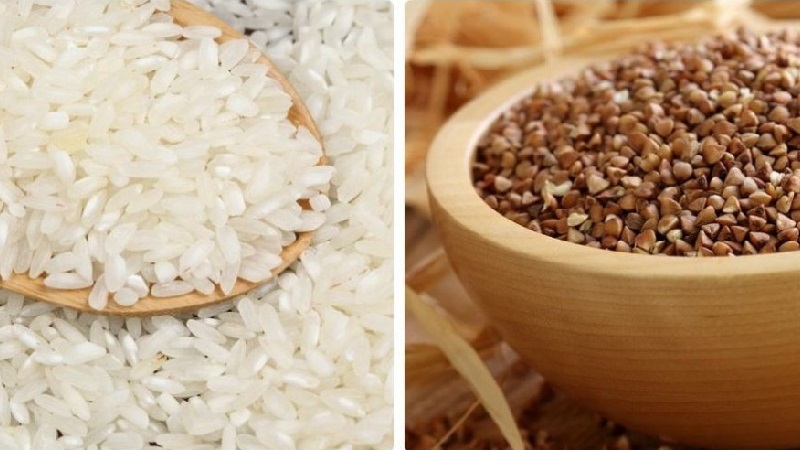
Use a colander
Labor intensity: easy.
Duration: fast.
You can disassemble the mixture into its constituents using a colander with suitable holes.
As a rule, buckwheat grain is larger in size and has a "round" shape, and grain of rice smaller and often elongated.
If you pour the mixture in small portions into a suitable colander and shake it well, most of the rice grains will pass through the holes into the lower container, and the buckwheat grains will linger in the colander. Rice remaining among the buckwheat grains after shaking can be easily sorted out by hand, after which the process is repeated with the next portion of the mixture.
Apply sloped surface
Labor intensity: easy.
Duration: fast.
Another way is to use a large cutting board with a rough surface.
The board is installed at a slight angle (35-45 °), a part of the mixture is carefully poured onto its upper part and lightly knocked on the bottom. Heavier grains of buckwheat will quickly slide down the board, while lighter grains of rice will remain closer to the top of the board.
Experimental methods
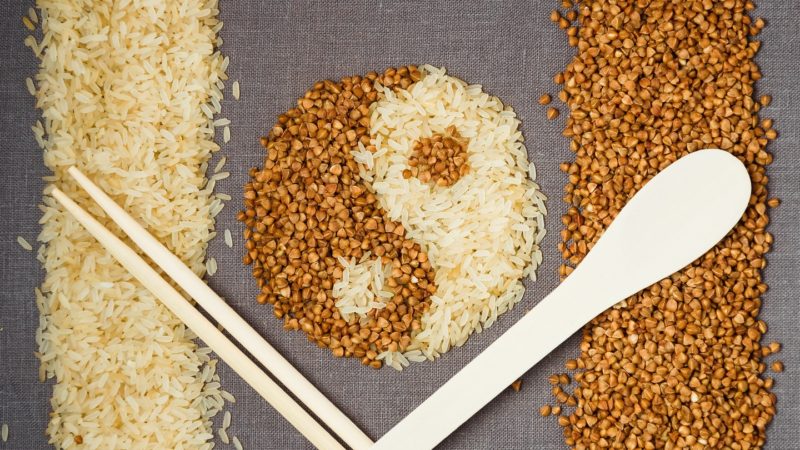
Sorting of rice and buckwheat can be done in non-standard ways.
Such procedures often require the availability of instruments, a long preparation time and a “jack of all trades” in the family.
Attention! After such sorting, the grains may require additional cleaning and drying, or they may completely lose food suitability.
Using the density difference
Labor intensity: easy.
Duration: average.
Water is poured into a prepared transparent container by 1 / 3-1 / 2 volume. Vegetable oil is carefully poured onto the water (in a slightly smaller volume than water). Since the density of the oil is less than the density of water, the oil and water will not mix, but will remain on top.
A mixture of cereals is poured in small portions into a container with water and oil.
Rice groats have a higher density (910 g / l) than buckwheat (800 g / l), respectively, rice grains will go to the bottom, and buckwheat grains will stay in the upper part near the border of oil and water.
After that, rice and buckwheat are taken out of the container, washed and dried. The cereals remain suitable for further use, at least in dishes that require roasting.
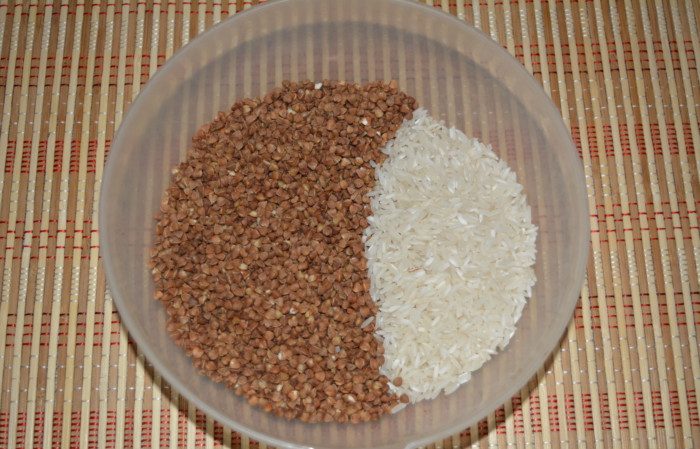
Using the difference in bulk density
Labor intensity: complicated.
Duration: average.
The most technologically advanced and laborious method of separating cereals is sorting using an air flow.
To do this, the mixture of cereals is placed in a container with a hole in the bottom, to which a tube is connected. A flat board is installed above the container outside (or around it).
Air is fed into the container through the tube from below, for example, using a pump. The power of the air flow is regulated on the spot, the main thing is to achieve a positive sorting result, when the lighter grains of rice fly into the air over the edge of the container and are "caught" by the board, and the heavier grains of buckwheat do not rise so high into the air and do not reach the board.
The disadvantage of this method is that buckwheat husks and hollow (empty) buckwheat grains will also fly into the air, overtaking rice (since their weight is even less), respectively, two boards will be required for separate "catching" of rice and husks.
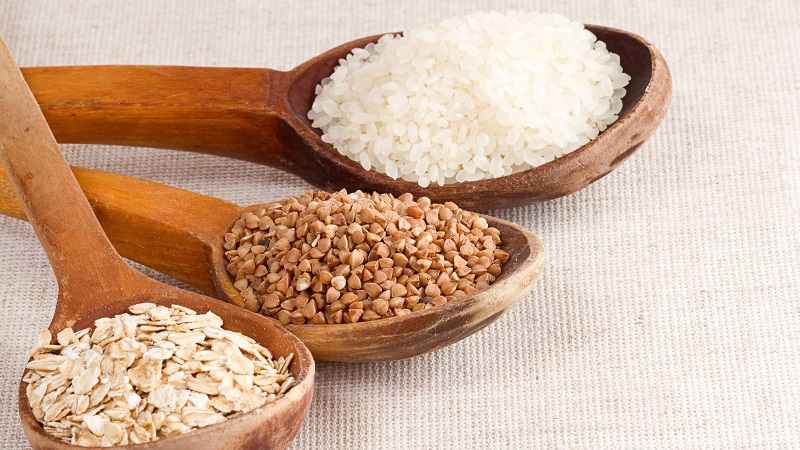
Using vibration
Labor intensity: easy.
Duration: fast.
The method of using vibration to separate rice and buckwheat is based on the same difference in bulk density, in which the container with the mixture is placed on a vibrating surface. In the course of constant uniform "shaking" after a short time, buckwheat will move to the bottom of the container, and the rice will mostly remain at the top.
In the same way, you can try to shake the groats by hand, however, without the use of vibration mechanisms, it will be difficult to achieve uniformity of shakes, while there is a high probability that the groats in the "manual" mode will be constantly mixed and not sorted.
Tips & Tricks
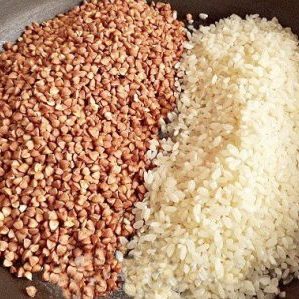
It will be least expensive to avoid mixing rice and buckwheat. But if, nevertheless, the cereals are mixed, it is worth assessing the scale of the problem and deciding on a way to eliminate it.
A small amount of mixed cereals can be quickly sorted by hand or, without wasting time on separation, immediately prepare rice-buckwheat porridge "Friendship" with meat, mushrooms or vegetables.
It is interesting:
Calorie content and BZHU of boiled green buckwheat.
Choosing the right groats: which buckwheat is better dark or light.
Conclusion
Experimental methods of dividing croup are valuable not so much by the result obtained, but by the interest aroused in children and in adult family members: the joint conduct of such experiments will give all participants a good mood and knowledge of physical phenomena.
In most cases, the separation of the croup is still better done manually: it will turn out more reliable and better.
Useless article. And the attached video generally makes you doubt the adequacy of the content on the site.
By what criterion did you evaluate the usefulness of the article? Couldn't separate buckwheat from rice after reading?
Here with the video, yes, there was a bobble. It is now more informative.